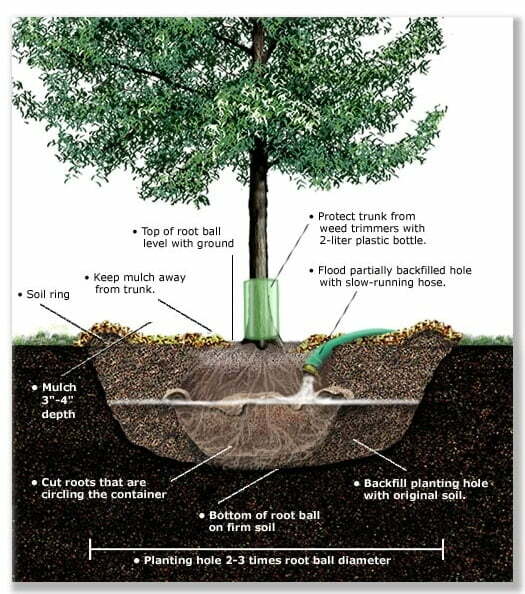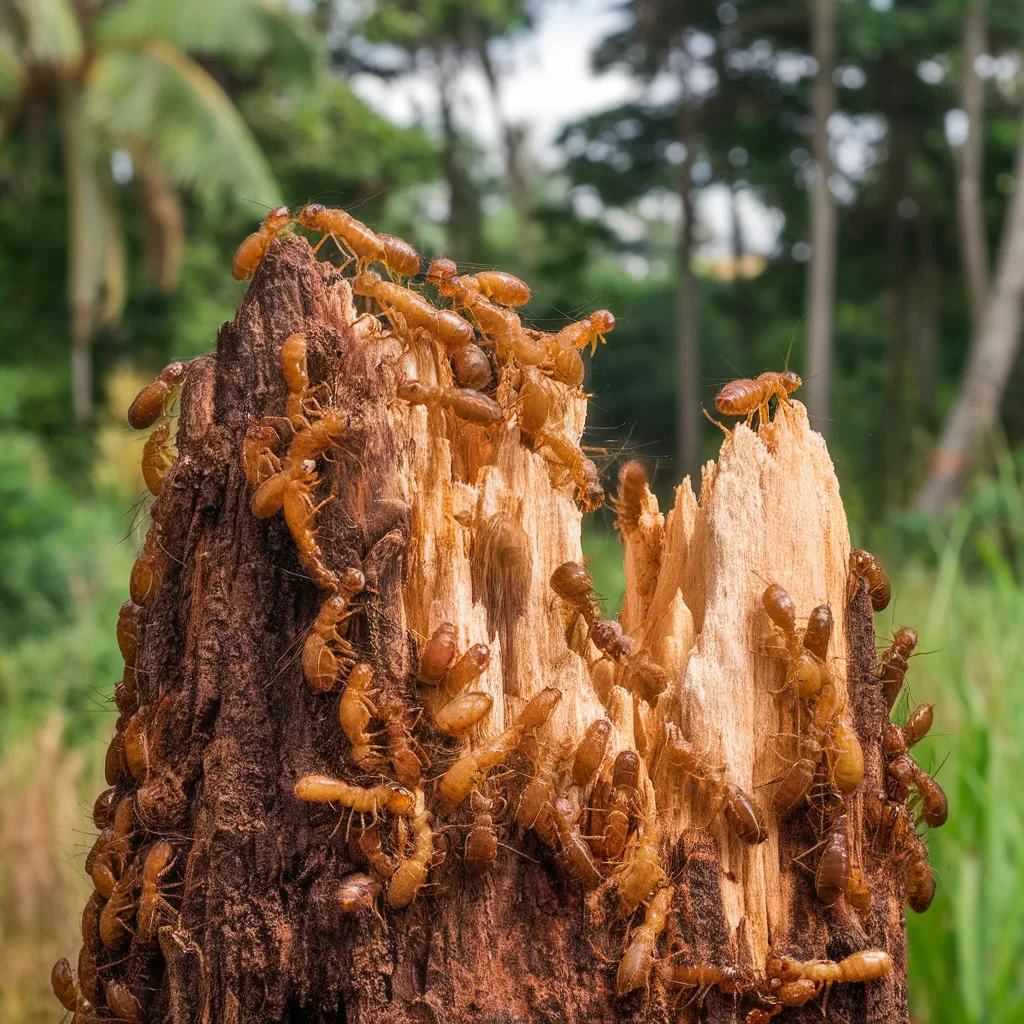Although it is normally not recommended, transplanting trees is quite common and from time to time, many people find it necessary when re-designing their landscape. Trees are generally not made for transplanting and they will resist. Of course, most landscaping and fruit trees are bought from nurseries and transplanted, not grown from seed in their final growing place as they should be. By following a few simple directions, you can transplant your own trees with great success.
Ideally, you should prepare for the transplant one year ahead of time. Trees should always be transplanted in the early spring while they are still dormant and before definitely before they begin to re-bud. Just after the ground has thawed in late February or early March, the transplant should be made. But since we want to prepare one year in advance, this means around the same time, we should begin.
One year before the transplant, you will want to define the new root structure. It will be impossible to transplant the entire root system. A core “ball” of root, a couple of feet in every direction will usually suffice. For saplings, the diameter should be twice the height of the tree. For larger trees, 4-6 feet should suffice. Dig a thin trench of the proper diameter around the tree. This should be done with a spade and the dig must go down 24 inches. The spade should be pushed into the ground straight and with sharp strikes. The goal is to cleanly cut the roots of the tree. Once the trench is cut, fill it with sphagnum moss. This will create a wall that will not allow the roots to grow beyond.
The next year, cut through the prepared trench again. Be sure to use the same clean solid strikes. You will then want to angle inward until you can form a complete cut through the bottom and top. Do not pull the tree out if it is stuck. Use your spade to loosen the ground enough to where it will come out cleanly. You may have to rock it around the hole a few times to loosen it. If the tree is too heavy to lift, you can insert wooden boards under the root ball and lever it out gently.
When the tree is out of the ground with the root ball intact, set it in a large burlap tarp or other porous material. The most important rule of transplanting trees is that the roots must remain wet. Even 5 minutes of drying could be fatal to the tree. Do not wash the roots or remove any soil from them. Keep the root ball intact with its soil. Never wash the soil away. Now we can wrap the root ball in the canvas and place it in a large container of water. If you do not have a container, the root ball should be saturated with a garden hose.

Your new hole for the tree should be prepared beforehand. It must be as deep as the root ball and about 2-3 feet wider. The sides of the hole should be rough and loose. Fill the hole with water and do not add anything else, especially fertilizers. Fertilizer should not be added until the following year after the roots have taken hold.
When the hole is filled with water, you can now place the tree inside. Fill the hole with soil and pack it VERY gently to remove any air bubbles. You want to make sure that the only thing in the hole is water, soil, and root.
Leave a depression around the tree about 2-3 inches. Do not mound the soil up the trunk. The depression will serve to keep water around the tree and not spilling off. Water the soil immediately with several gallons and again every two weeks for the course of the season.
Following these steps will give you the best success in transplanting your trees. While survival rates for transplants are never 100%, you should be able to rest easy as long as you remember your watering schedule for the first year.



